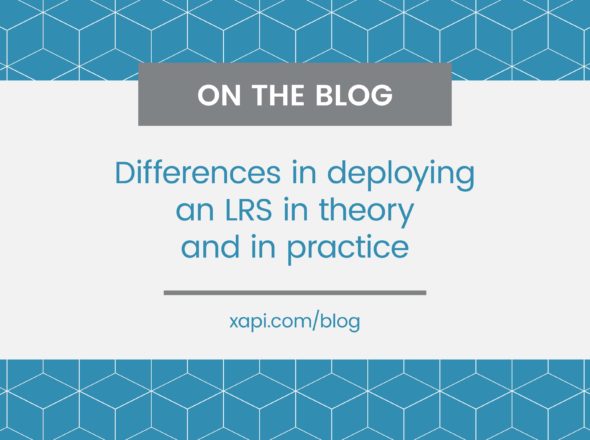What’s the difference between session duration and attempt duration? Timestamp or Stored? When should you record time taken and how can you report it? This series of blogs looks specifically at duration and how to report on it.
As a provider of an LMS, LRS or other system launching content and reporting on duration information, you can use the table presented last week as a guide for reporting. In an ideal world, you can simply look at the Result Duration property of the completed/passed/failed, suspended and terminated statements to grab your attempt and session durations. Win!
Handling limited data
Unfortunately, the world is not an ideal place. In practice, many Activity Providers have not implemented duration at all, or are only reporting duration at activity completion, leaving the report viewer wondering about the time spent by learners on partially completed attempts. Many early adopters, who designed their statements before the best practice I described last week emerged, are understandably waiting for the release of CMI5 before updating their statement structure.
As an LMS provider that leaves you with two options:
-
Encourage your activity providers to improve the data they’re sending (point them to this blog series).
-
Work with the data they provide or you can gather yourself.
Working with the data you have most likely means using Timestamp to calculate duration. For session duration, you can simply take the first and last statements issued in a session and subtract! The harder part is working out the break points between sessions, especially if the learner re-launches the experience soon after leaving it. The following guidelines will help:
-
As the LMS launching the experience, you should know when the session started. In fact it’s good practice for the LMS itself to issue a statement using the verb http://adlnet.gov/expapi/verbs/launched to indicate that it launched the experience. This means that even if the Activity Provider never issues a single statement, you know when experience was launched. This is essential for reporting if the experience can be launched from multiple systems and the Activity Provider is not sending the data you need.
-
When the learner has launched the experience again, you can assume that the previous session ended at about the time of the previous statement before that new launch.
-
When the learner hasn’t launched the experience again, you can assume that either the session is still in progress, or the last statement issued represents the end of the session.
-
To work out if the session is still in progress, you’ll need to define a session timeout period. If the activity provider is doing client side JavaScript tracking, then the LRS should define a timeout for the launch security credentials and you can use that same value. If not, define something sensible for the types of experience you’re launching. Any statements issued after the timeout period you define can be considered a new session.
Attempt duration can be harder or even impossible depending on what data the Activity Provider sends. If you can follow them, you can use the rules below in priority order depending on what data the Activity Provider sends:
-
If the Activity Provider sends a ‘suspended’, ‘completed’, ‘passed’ or ‘failed’ statement with a Result Duration, then take this as the attempt duration. If more than one of these statements are sent, the latest one in a given attempt will represent the latest duration.
-
If the Activity Provider sends an ‘attempted’ statement with a Result Duration of zero then this marks the start of the attempt for the purposes of calculating attempt duration.
-
If the Activity Provider sends a ‘suspended’, ‘completed’, ‘passed’ or ‘failed’ statement without a Result Duration, then then the latest of these within an attempt marks the end of that attempt. Add up the session durations of all sessions within that attempt.
-
Assume that the last statement (excluding ‘launch’ and ‘initialized’) before an ‘attempted’ statement with a Result Duration of zero was the last statement in that previous attempt.
-
If Result Duration is not used by an Activity Provider but they use the ‘attempted’ statement correctly, you can calculate the end of a previous attempt as the latest ‘suspended’, ‘completed’, ‘passed’ or ‘failed’ statement before an ‘attempted’ statement.
-
If Result Duration is not used by an Activity Provider and they use the ‘attempted’ statement incorrectly, then it may not be possible to accurately track the start and end of an attempt. The only sensible solution here is either not report attempt duration for these activities or allow your administrators to configure how duration is reported on a per activity basis.
As you can see, reporting on limited data from Activity Providers is hard! This complexity can be avoided by Activity Providers sending the data as outlined last week. If they don’t and you really need to report on their data, we can help.


